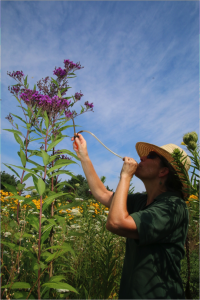The Barclays PGA Tournament kicks off the FedEx Cup playoff in professional golf. This year it’s right here, right now — at Bethpage State Park on Long Island in downstate New York. The IPM (integrated pest management) piece of this story? Here’s where we tested, developed, and showcased preventive, threshold-based IPM protocols that can steeply reduce year-in, year-out pesticide use on any golf course, anywhere — all while protecting habitat for pollinators and many other creatures. In fact, we’ve scored environmental impact quotients up to 96 percent lower than conventional practices.

The IPM tactics we honed on Bethpage’s Green Course over 12 years are also used on its Black Course — among the most challenging courses you could find anywhere. Think of it. Putting greens buzz-cut to within an inch of their life. Talk about stress! (Technically, that’s an 1/8th inch of their life.) Fairways mowed to about ½ inch. Roughs to an inch or so — and even that’s a height we don’t recommend trying at home.
Which is why we can’t stress how important long-term, real-world research is. Whether it’s searing heat and no rain or relentless rain and chilly weather — or any combination thereof — well, you just don’t get truly useful results until you’ve tested your work in widely differing seasons and situations. And in dealing with pests on golf courses, it’s all about the season. It gets even more impressive when you consider that Bethpage (along with the other 24 public-park golf courses across New York) is open to all comers, facing heavy traffic and tight budgets.

We’ve always known how important beneficial insects and other organisms are to ecosystem health. In fact, many of our IPMprotocols are built around using beneficials and biocontrols to keep pests at bay. Equally as important: protecting nontarget organisms — frogs, for example — from exposure to pesticides. Which is why we were happy to find this fine fella hanging out at Bethpage in a marshy verge during an Earth Day trek around Bethpage. And a 2015 survey of pollinators in naturalized areas at Bethpage revealed at least 92 species of bees, wasps, and other pollinators as well as a diversity of plants that attract them.
Good stuff. Thank you, Integrated Pest Management.
